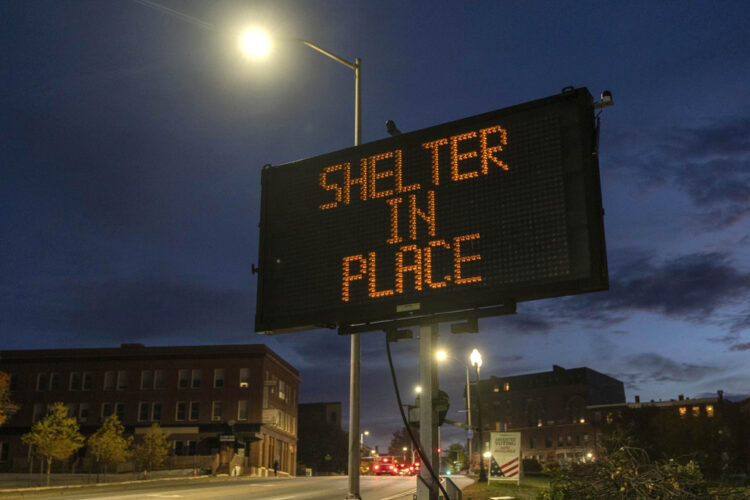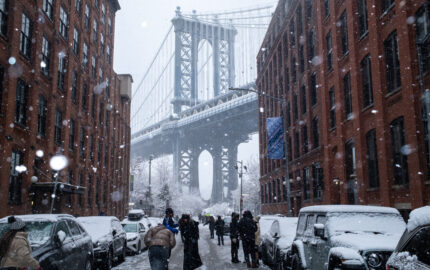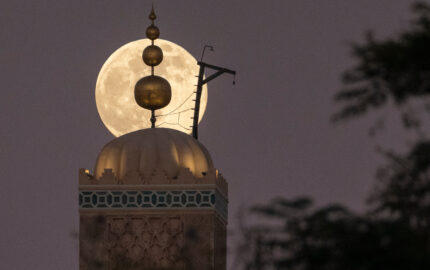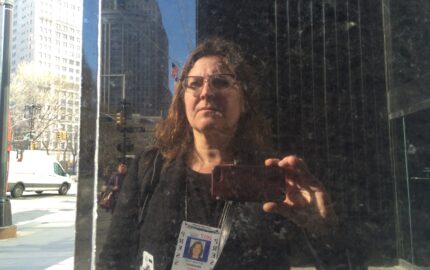By Jacqui Banaszynski
Jet lag clawed at me for days after getting home from writing workshops in Romania. My return flights involved cancellations, delays, the demand to check a bag I have always carried on and a broken seat on the long haul overseas. The seat wasn't broken badly enough to warrant finding me another; even if it had been, no other seats were available, so I was told to strap in and stay that way. Such is flying these days. I still love being in the air; it feels like being suspended in time and mystery. As much as I've read about how airfoil works, it's always a wonder that all that lumbering tonnage can lift gently into the air and then sail there for thousands of miles, almost always to touch down safely, with a bump and a rumble, on the other end.
Last week, the bump back into reality felt harsh. Not the literal landing of the Airbus 330 — that was smooth — but the assault of the week's news. Gaza, Ukraine, Acapulco and then Lewiston, Maine. That doesn't even get into the civic chaos in Washington, D.C. I wandered my house, glad to be home, but found myself distracted. Work got done in short bursts of forced attention, but nothing stuck. As Friday's newsletter deadline approached, I did I what I usually do on Thursday nights: Called Mountain Editor.
It's become a habit for us. He writes a weekly column for his fine mountain newspaper. It's due on Tuesdays, so he calls on Monday nights — distracted and claiming he is out of ideas. I offer several. He rejects most: Not local enough. But at some point, something clicks, he ends the call quickly and the next day his words go to press.
Thursday nights bring the reverse. It's now my turn to hunt around for something to anchor the opening of the newsletter. Some weeks the ideas gel and then it's just the hard slog of writing. Other weeks, I wail that the mental cupboard is empty. Mountain Editor chatters at me, offering suggestions, most from recent headlines. I reject most, arguing that dissecting the week's events isn't Storyboard's mission; highlighting, analyzing and celebrating the timeless art and craft of story work is. I drone on: There are plenty of places people can find critiques of the daily news. We don't need to add our spotlight to the glare. We don't need to be one more voice of complaint about a deadline error or an awkward headline or a puzzling reference in a story. We don't exist to chase the news, but to learn from the best of craft that goes into coverage of the news and, even more, the issues and people and meaning tethered to the news.
Last week, that conversation took us down an especially deep rabbit hole. I was scratching at concerns: Why so much of the early coverage of Hurricane Otis included photo captions of "looting," when what I saw in many of the pictures was desperate people gathering food, water, medicine and disposable diapers, not trusting that help was coming. Why an early story from the slaughter and manhunt in Lewiston, Maine, included one paragraph about how a mostly white town had become a magnet for immigrants; was that a hint that the shooting was race-related? Why coverage of the mushrooming war in Israel/Gaza is so riddled with politics that I don't know what to believe.
Mountain Editor suggested I had plenty to write about. I again wailed that Storyboard doesn't join the chase of the news; it explores craft.
That's when the conversation took a turn that still has me thinking. Because this is what Mountain Editor said next:
It was quite the rant. And it could have added to my weariness. But I found it clarifying.
Journalism can't fix the world, any more than we can get supplies into Gaza or quiet a hurricane or hunt down a shooter or stop the election of election deniers to national office. Our job is to witness the world, question spin, dig for common-sense truth, record events as fully as possible as they spool out — knowing that there will always be more to question, probe, learn. Situations unfold and journalism, at its best, follows the wrinkles in that unfolding, then goes back for more and more and more. It's not a one-and-done job — and shouldn't be.
The way journalism does that is through craft. Craft is the tool that secures our foundation and then lets us build understanding up and out. Sometimes, when events are so fast and emotional that they blister, the craft tools we have at hand feel inadequate to the task. But we reach for others as we go. We don't stop and shrug and say there is no more we can do. We keep building, gaining mastery along the way. The deadline reporter puts the frame in place. Others come in to steady that frame and fill in the spaces, some with investigations, others with human narratives. It goes on and on until the historian returns to smooth and polish and restore and archive, reviewing earlier work and placing raw events in fuller context for all time.
Craft is, indeed, shaped by circumstance. And circumstance can elevate the craft.
Jet lag clawed at me for days after getting home from writing workshops in Romania. My return flights involved cancellations, delays, the demand to check a bag I have always carried on and a broken seat on the long haul overseas. The seat wasn't broken badly enough to warrant finding me another; even if it had been, no other seats were available, so I was told to strap in and stay that way. Such is flying these days. I still love being in the air; it feels like being suspended in time and mystery. As much as I've read about how airfoil works, it's always a wonder that all that lumbering tonnage can lift gently into the air and then sail there for thousands of miles, almost always to touch down safely, with a bump and a rumble, on the other end.
Last week, the bump back into reality felt harsh. Not the literal landing of the Airbus 330 — that was smooth — but the assault of the week's news. Gaza, Ukraine, Acapulco and then Lewiston, Maine. That doesn't even get into the civic chaos in Washington, D.C. I wandered my house, glad to be home, but found myself distracted. Work got done in short bursts of forced attention, but nothing stuck. As Friday's newsletter deadline approached, I did I what I usually do on Thursday nights: Called Mountain Editor.
It's become a habit for us. He writes a weekly column for his fine mountain newspaper. It's due on Tuesdays, so he calls on Monday nights — distracted and claiming he is out of ideas. I offer several. He rejects most: Not local enough. But at some point, something clicks, he ends the call quickly and the next day his words go to press.
Thursday nights bring the reverse. It's now my turn to hunt around for something to anchor the opening of the newsletter. Some weeks the ideas gel and then it's just the hard slog of writing. Other weeks, I wail that the mental cupboard is empty. Mountain Editor chatters at me, offering suggestions, most from recent headlines. I reject most, arguing that dissecting the week's events isn't Storyboard's mission; highlighting, analyzing and celebrating the timeless art and craft of story work is. I drone on: There are plenty of places people can find critiques of the daily news. We don't need to add our spotlight to the glare. We don't need to be one more voice of complaint about a deadline error or an awkward headline or a puzzling reference in a story. We don't exist to chase the news, but to learn from the best of craft that goes into coverage of the news and, even more, the issues and people and meaning tethered to the news.
Navigating the maze of news
Last week, that conversation took us down an especially deep rabbit hole. I was scratching at concerns: Why so much of the early coverage of Hurricane Otis included photo captions of "looting," when what I saw in many of the pictures was desperate people gathering food, water, medicine and disposable diapers, not trusting that help was coming. Why an early story from the slaughter and manhunt in Lewiston, Maine, included one paragraph about how a mostly white town had become a magnet for immigrants; was that a hint that the shooting was race-related? Why coverage of the mushrooming war in Israel/Gaza is so riddled with politics that I don't know what to believe.
Mountain Editor suggested I had plenty to write about. I again wailed that Storyboard doesn't join the chase of the news; it explores craft.
That's when the conversation took a turn that still has me thinking. Because this is what Mountain Editor said next:
Craft is shaped by circumstance. You can go into a story with the best intentions and practices and have it all get blown up by circumstances. And we’re not dealing with normal circumstances anymore.
Even what's happening in Congress is not normal. After eight years of covering Trump, the press has failed to find normal — and fails when it normalizes what's happening. The people who write about it keep using words like "extraordinary" and "unprecedented." Even the legal system doesn’t know what to do.
So how do we bring our craft to bear on that?
We've all been through it, to some degree, as reporters. I know what to do, until all of a sudden I can't: I don't have cell service. I don't have enough staff to fact-check every claim. I'm being threatened.
These are not new questions. But everything has been ratcheted up. There’s no rest. Not a single day.
No deep breaths.
If I were editor of The New York Times, I’d go home every night and lament.
It was quite the rant. And it could have added to my weariness. But I found it clarifying.
What journalism isn't — and is
Journalism can't fix the world, any more than we can get supplies into Gaza or quiet a hurricane or hunt down a shooter or stop the election of election deniers to national office. Our job is to witness the world, question spin, dig for common-sense truth, record events as fully as possible as they spool out — knowing that there will always be more to question, probe, learn. Situations unfold and journalism, at its best, follows the wrinkles in that unfolding, then goes back for more and more and more. It's not a one-and-done job — and shouldn't be.
The way journalism does that is through craft. Craft is the tool that secures our foundation and then lets us build understanding up and out. Sometimes, when events are so fast and emotional that they blister, the craft tools we have at hand feel inadequate to the task. But we reach for others as we go. We don't stop and shrug and say there is no more we can do. We keep building, gaining mastery along the way. The deadline reporter puts the frame in place. Others come in to steady that frame and fill in the spaces, some with investigations, others with human narratives. It goes on and on until the historian returns to smooth and polish and restore and archive, reviewing earlier work and placing raw events in fuller context for all time.
Craft is, indeed, shaped by circumstance. And circumstance can elevate the craft.



